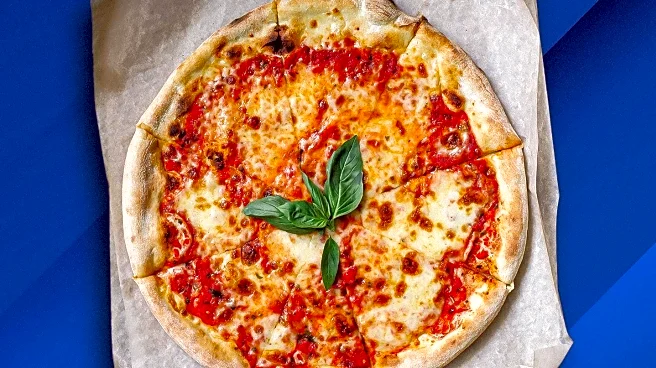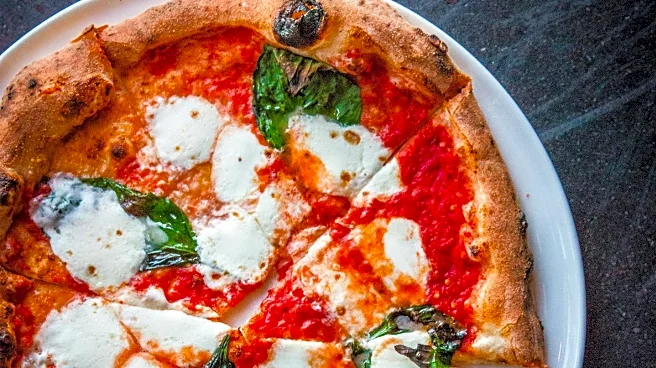What's Happening?
DoorDash has released its inaugural list of America's 50 Most Popular Local Pizzerias, coinciding with National Pizza Month. The list was compiled after analyzing customer ratings and reviews from January to September 2025. It features top pizzerias from five states known for their pizza culture: California, Connecticut, Illinois, Michigan, and New York. Each state has ten pizzerias highlighted, showcasing local businesses that have made a significant impact in their communities. Notable mentions include Joe's Pizza in New York, a staple since 1975, and Rubirosa Pizza & Ristorante, known for its unique 'tie dye' pizza. The list aims to celebrate the diversity and creativity in pizza-making across different regions.
Why It's Important?
The recognition of local pizzerias by a major food delivery service like DoorDash underscores the importance of small businesses in the culinary landscape. These establishments contribute to local economies and cultural identity, offering unique flavors and experiences that differ from national chains. The list not only boosts the visibility of these pizzerias but also encourages consumers to explore and support local dining options. This initiative can lead to increased business for the featured pizzerias, potentially driving economic growth in their respective areas. It also highlights the role of customer feedback in shaping industry trends and preferences.
What's Next?
As National Pizza Month continues, pizzerias on the list may experience a surge in customer interest and patronage. DoorDash's recognition could lead to collaborations or promotions that further enhance their market presence. Additionally, other local eateries might strive to improve their offerings to gain similar recognition in future lists. The focus on local businesses could inspire other food delivery platforms to create similar initiatives, fostering a competitive environment that benefits consumers and businesses alike.
Beyond the Headlines
The celebration of local pizzerias highlights broader cultural and social dynamics, such as the role of food in community building and identity. It reflects a growing trend towards valuing authenticity and local craftsmanship in the food industry. This movement can influence culinary education and inspire new generations of chefs to innovate while respecting traditional methods. Furthermore, it raises questions about sustainability and the impact of food delivery services on local economies, prompting discussions on how to balance convenience with community support.











